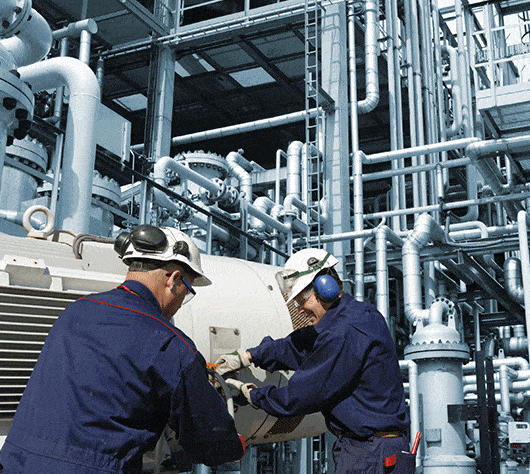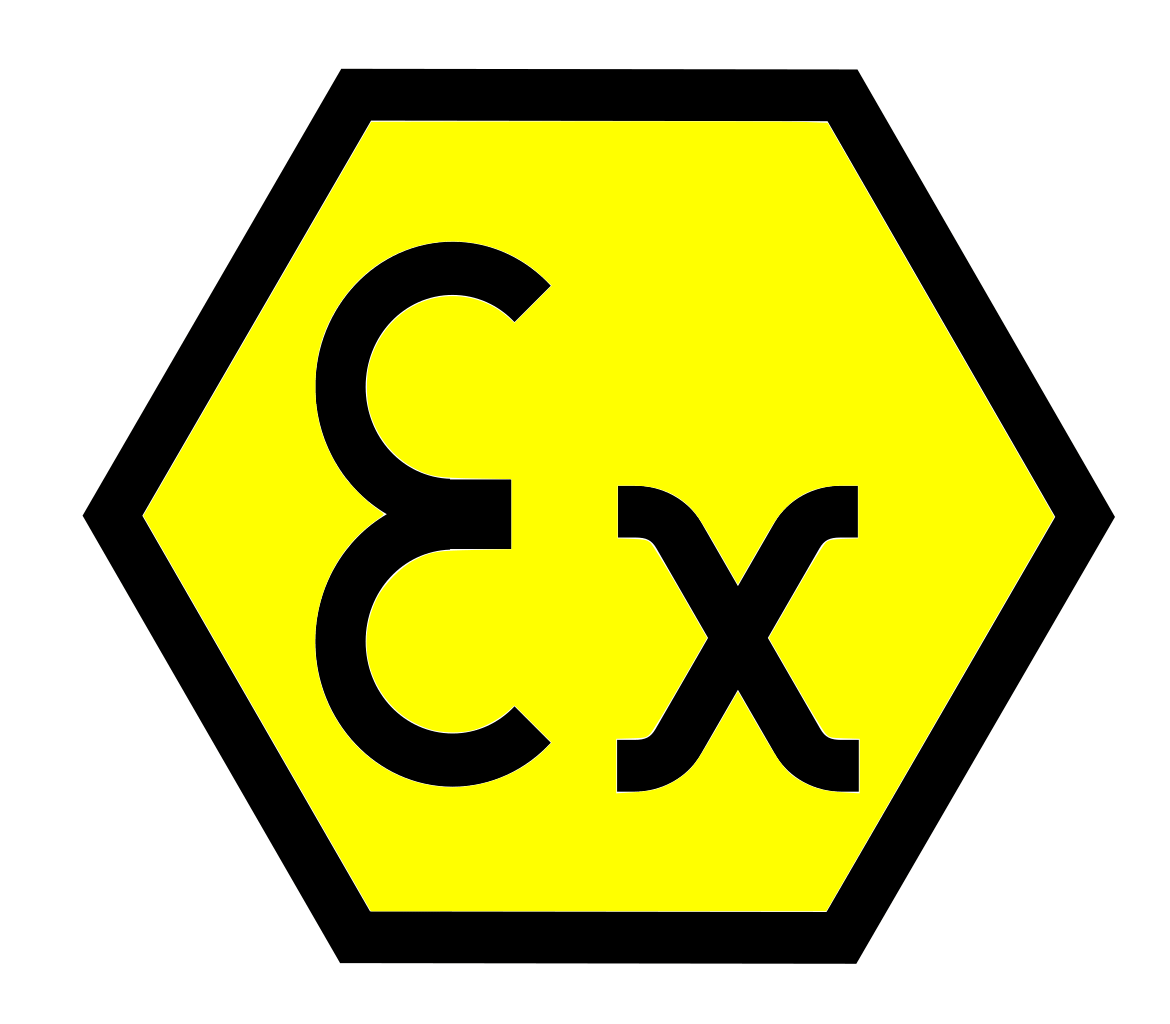The Main Principles Of Roar Solutions
The Main Principles Of Roar Solutions
Blog Article
Roar Solutions Fundamentals Explained
Table of ContentsNot known Details About Roar Solutions What Does Roar Solutions Do?Roar Solutions Fundamentals Explained
In such an ambience a fire or explosion is feasible when three fundamental conditions are satisfied. This is often referred to as the "harmful location" or "burning" triangular. In order to secure installments from a potential explosion a method of analysing and identifying a possibly hazardous area is called for. The purpose of this is to make sure the appropriate selection and installment of tools to ultimately stop an explosion and to make certain safety and security of life.
(https://www.40billion.com/profile/91601565)
No equipment must be set up where the surface area temperature level of the equipment is more than the ignition temperature level of the provided threat. Below are some usual dirt unsafe and their minimal ignition temperature. Coal Dirt 380C 225C Polythene 420C (melts) Methyl Cellulose 420C 320C Starch 460C 435C Flour 490C 340C Sugar 490C 460C Grain Dust 510C 300C Phenolic Material 530C > 450C Aluminium 590C > 450C PVC 700C > 450C Residue 810C 570C The chance of the risk existing in a focus high enough to trigger an ignition will differ from area to place.
In order to categorize this danger a setup is split right into locations of risk relying on the amount of time the unsafe exists. These areas are referred to as Areas. For gases and vapours and dusts and fibers there are 3 areas. Zone 0 Zone 20 An unsafe atmosphere is extremely likely to be existing and may be present for long periods of time (> 1000 hours per year) or perhaps constantly Area 1 Area 21 An unsafe ambience is feasible but not likely to be existing for long periods of time (> 10 450 C [842 F] A category of T6 suggests the minimum ignition temperature is > 85 C [185 F] Dangerous location electric devices maybe made for use in greater ambient temperatures. This would suggested on the ranking plate e.g. EExe II C T3 Ta + 60C( This suggests at 60C ambient T3 will not be gone beyond) T1 T1, T2, T3, T4, T5, T6 T2 T2, T3, T4, T5, T6 T3 T3, T4, T5, T6 T4 T4, T5, T6 T5 T5, T6 T6 T6 A T Course score of T1 suggests the optimum surface temperature created by the instrument at 40 C is 450 C. Presuming the connected T Course and Temperature level score for the devices are suitable for the area, you can constantly make use of a tool with a much more stringent Division rating than needed for the location. There isn't a clear solution to this question unfortunately. It truly does depend on the kind of devices and what fixings need to be brought out. Tools with certain examination treatments that can not be carried out in the field in order to achieve/maintain 3rd party score. Should come back to the manufacturing facility if it is prior to the equipment's solution. Field Fixing By Authorised Employee: Difficult testing might not be required nonetheless details procedures may need to be followed in order for the devices to keep its third event ranking. Authorized workers have to be employed to carry out the work properly Repair work have to be a like for like substitute. New element need to be taken into consideration as a direct replacement calling for no unique testing of the equipment after the repair service is total. Each tool with a hazardous ranking need to be examined independently. These are outlined at a high level below, but for more comprehensive information, please refer directly to the guidelines.
The smart Trick of Roar Solutions That Nobody is Discussing
The tools register is a comprehensive data source of equipment documents that includes a minimum collection of fields to recognize each thing's place, technical specifications, Ex lover category, age, and environmental data. This info is vital for monitoring and handling the tools successfully within unsafe areas. In comparison, for routine or RBI sampling inspections, the quality will be a mix of In-depth and Close examinations. The ratio of In-depth to Close examinations will be figured out by the Equipment Threat, which is examined based upon ignition risk (the chance of a source of ignition versus the chance of a combustible environment )and the dangerous location classification
( Zone 0, 1, or 2). This variation will certainly additionally influence the resourcing needs for job prep work. Once Great deals are specified, you can establish tasting strategies based on the sample size of each Great deal, which refers to the number of random equipment things to be evaluated. To identify the needed example size, two facets need to be assessed: the dimension of the Whole lot and the classification of examination, which suggests the degree of initiative that should be applied( lowered, typical, or enhanced )to the assessment of the Great deal. By integrating the category of examination with the Lot dimension, you can after that develop the appropriate rejection requirements for an example, indicating the allowable variety of defective things found within that example. For more information on this procedure, please describe the Power Institute Guidelines. The IEC 60079 common recommends that the optimum interval in between inspections need to not go beyond three years. EEHA evaluations will likewise be performed outside of RBI campaigns as part of arranged maintenance and tools overhauls or repairs. These evaluations can be credited towards the RBI example sizes within the influenced Whole lots. EEHA assessments are performed to recognize mistakes in electric devices. A heavy scoring system is important, as a solitary tool may have numerous mistakes, each with varying levels of ignition risk. If the consolidated score of both inspections is much less than twice the mistake rating, the Whole lot is deemed acceptable. If the Great deal is still thought about inappropriate, it needs to undertake a full examination or reason, which may set off more stringent evaluation protocols. Accepted Lot: The causes of any faults are identified. If a common failing setting is discovered, extra devices might call for inspection and repair work. Faults are identified by extent( Security, Integrity, House cleaning ), making certain that immediate concerns are analyzed and attended to promptly to alleviate any type of impact on safety and security or operations. The EEHA database should track and record the lifecycle of faults together with the restorative activities taken. Executing a robust Risk-Based Evaluation( RBI )approach is essential for making certain conformity and safety in managing Electric Devices in Hazardous Locations( EEHA) (hazardous area course). Automated Fault Scoring and Lifecycle Administration: Effortlessly handle faults and track their lifecycle to enhance evaluation accuracy. The intro of this assistance for risk-based assessment even more enhances Inspectivity's setting as a best-in-class option for regulatory compliance, along with for any kind of asset-centric evaluation use case. If you are interested in finding out more, we invite you to request a presentation and discover how our service can change your EEHA management processes.
The Ultimate Guide To Roar Solutions

In terms of explosive threat, a harmful area is an environment in which an eruptive environment exists (or may be expected to be present) in amounts that need special precautions for the building and construction, installation and usage of devices. hazardous area electrical course. In this short article we discover the difficulties encountered in the workplace, the danger control steps, and the called for expertises to function securely
These materials can, in certain problems, develop eruptive environments and these can have major and tragic their explanation consequences. Many of us are familiar with the fire triangle eliminate any one of the three aspects and the fire can not happen, yet what does this mean in the context of dangerous areas?
In a lot of circumstances, we can do little regarding the degrees of oxygen airborne, but we can have substantial influence on resources of ignition, as an example electric tools. Dangerous areas are documented on the unsafe location classification illustration and are determined on-site by the triangular "EX-SPOUSE" sign. Right here, amongst other crucial information, zones are split right into three kinds depending on the danger, the probability and period that an eruptive atmosphere will exist; Area 0 or 20 is regarded one of the most dangerous and Area 2 or 22 is considered the least.
Report this page